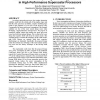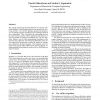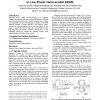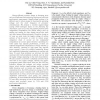205 search results - page 31 / 41 » Clock gating architectures for FPGA power reduction |
CF
2005
ACM
14 years 22 days ago
2005
ACM
In modern superscalar processors, the complex instruction scheduler could form the critical path of the pipeline stages and limit the clock cycle time. In addition, complex schedu...
DAC
1997
ACM
14 years 3 months ago
1997
ACM
The concept of improving the timing behavior of a circuit by relocating flip-flops is called retiming and was first presented by Leiserson and Saxe. The ASTRA algorithm propose...
DAC
2006
ACM
14 years 11 months ago
2006
ACM
Increasing source voltage (Source-Biasing) is an efficient technique for reducing gate and sub-threshold leakage of SRAM arrays. However, due to process variation, a higher source...
MICRO
2003
IEEE
14 years 4 months ago
2003
IEEE
Energy-efficient processor design is becoming more and more important with technology scaling and with high performance requirements. Supply-voltage scaling is an efficient way to...
FPL
2006
Springer
14 years 2 months ago
2006
Springer
Given large circuit sizes, high clock frequencies, and possibly extreme operating environments, Field Programmable Gate Arrays (FPGAs) are capable of heating beyond their designed...




